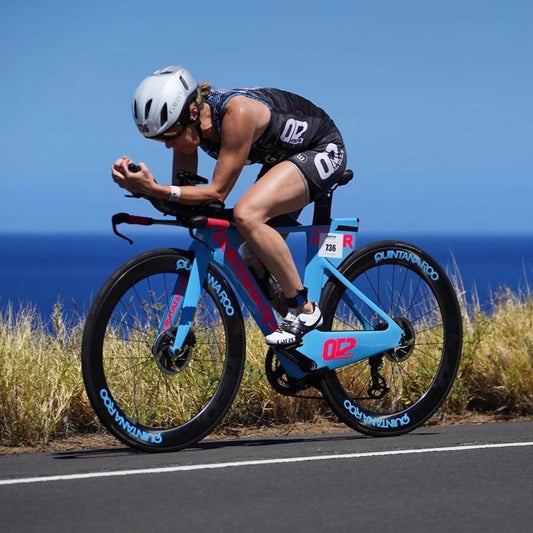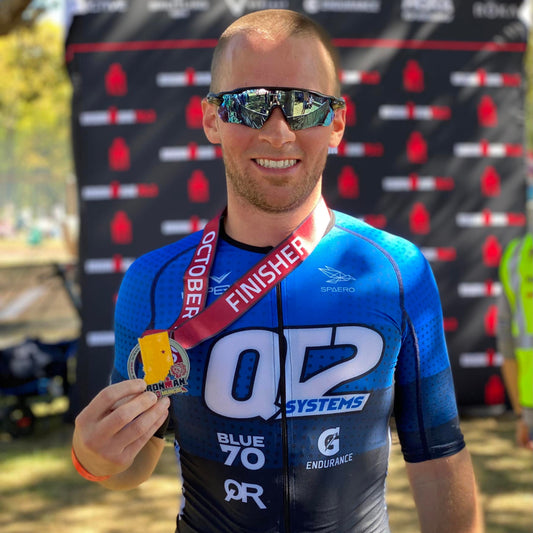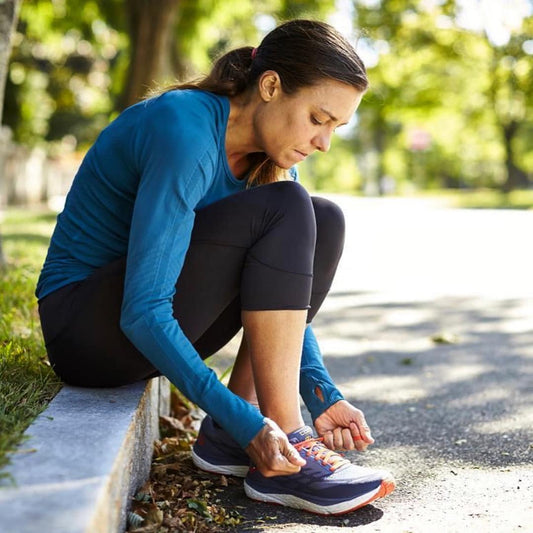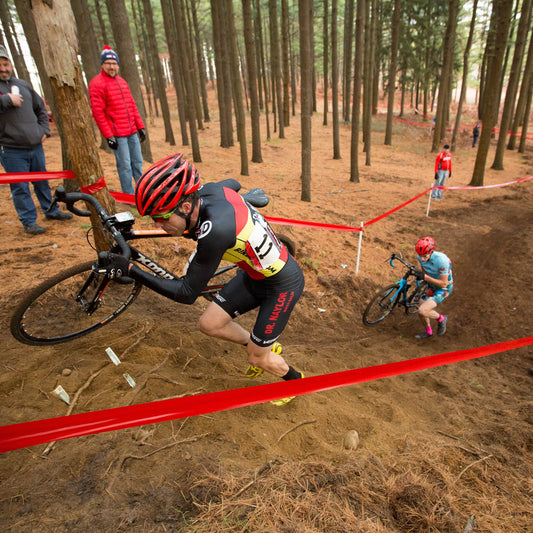Written by Coach Courtney Kutler
26.2 miles is quite a long distance to travel by foot; no need to make it any more challenging, right? You’ve put in all the training, and race day is here! There are many ways that you can maximize your marathon and ensure your best performance on the day. Follow these tips for a smooth and speedy race!
Gear That Helps You GO!: It’s important to test your gear during training to make sure it works for you and is comfortable. Nothing new on race day! There is a lot of technology out there that can help you run your best. In addition to moisture-wicking clothing, you can explore Super Shoes that have carbon plates which can reduce the effort you need to run a particular distance, potentially leading to faster paces. There are also lots of options for GPS watches, running pods and heart rate monitors that can help you pace appropriately and run efficiently. Determine what is worth your investment and what works for you.
Dress for Success: Check the forecast the night before and double-check the morning of the race. A typical guideline I follow is to consider the temperature at the start and add 20 degrees to that temperature. Then dress for comfort given the higher temperature and what you would be comfortable standing around in at that temperature. For example, if it’s 50 degrees at the start, wear what would keep you comfortable standing around in 70-degree weather.
Sweat-wicking materials (nylon, polyester, merino wool) are best for running as they move moisture away from the body. If raining, these types of technical race clothing will be very beneficial. Also, focus on form-fitting and lightweight materials so you don’t have to deal with heavy and wet fabric bunching up. A hat or visor can be very helpful to keep rain out of your eyes. If it’s raining before the start of the race, stay in a warm dry environment until you need to start your warmup. Wearing a lightweight rain jacket or even starting with an inexpensive nylon poncho that you can toss to the side as soon as you get going can be helpful. Don’t forget some dry clothes after crossing the finish line…you will want them!
If it is cool at the start but will warm up during the race, wear layers that you can easily shed before the start or a few miles in when you are warm. Arm warmers and gloves can be a good option because they are easy to stash or toss if you don’t need them. If wearing extra layers, make sure they are easy to remove while running. Full zip shirts are much easier to remove than pulling a shirt over your head. Be sure to wear your race bib on a layer you plan to wear the entire race.
Avoid the Chafe: Nothing is quite as distracting during a race as skin rubbing raw with each step. Using anti-chafe products such as Body Glide can help prevent this from happening. Moisture-wicking clothing will help move the sweat away from your body and minimize any skin irritation; it is also very breathable and will help keep you cool! Feet are often where runners experience discomfort during the marathon. Chafing and/or blisters can stop you in your tracks! Look for socks specifically designed for running that are, you guessed it, sweat wicking! Socks should fit close to the foot to avoid any movement of the sock mid-run. Test out your socks and shoes during a rainy run to see what will work best for you in the wettest of conditions.
Mental Fitness is Magic: It is extremely beneficial to visualize your race beforehand. It will build confidence, help you mentally prepare for obstacles, decrease stress/anxiety, and enhance motivation. When visualizing, tap into all your senses: smell, sight, taste, sound, and touch. Visualize how each part of your race day will go. Visualize obstacles that you might encounter and how you will overcome them. Visualize the joy of crossing the finish line! You will go into the race better prepared and ready to handle whatever comes your way. Mantras can also be beneficial on race day. Mantras are positive self-talk that improve confidence and reduce anxiety. Decide on a few catchphrases that will give you the boost when you need it the most! Don’t forget to SMILE! Smiling reduces perceived exertion and improves mood. Even if you have to force a smile, it will help.
Realistic Goals Lead to Successful Races: When setting your goals, plan on running 26.4 miles. Even when doing your best to run the shortest route (see section below on Tangents), you often end up with a few extra steps each mile. Utilizing a run pace estimator, like the QT2 run calculator HERE, can help you set realistic goals based on your training and current fitness. If you have inclement weather (lots of rain, high winds, high humidity, or high heat), you will want to focus more on effort and not on pace.
Consider 3 goals for yourself. If you plan to walk aid stations or at set intervals, factor this into your goal time. Goal A is your “shoot for the moon” goal that is a reach but achievable if all the stars align and you have a perfect day. Goal B is a time that is within your reach but still a challenge for you; this is a goal that should happen even if you don’t have a perfect day. Goal C is a goal that will leave you satisfied with your effort even if the day doesn’t go as planned. You want to feel successful and know that you gave your best on that day. Sometimes that goal could be to finish the race; after all, only 0.01 percent of people in the world have completed the distance!
Start Smart: Make sure you are starting in the correct corral or start position based on your fitness and goals. If running with a pace group, make sure you know the pacer's strategy before the race starts. Do they plan to run the whole race or do a run/walk interval? Will they walk through aid stations? Are they pacing based on effort or speed? Does the pacing adjust based on course elevation throughout the race? Do they plan to run even splits, negative splits, or positive splits? Evaluate how their strategy compares to how you’ve trained. Most of all: LISTEN to your body and don’t get carried away with a faster group. Your best marathon time will be starting conservatively and finishing strong. If you feel a pace group is too congested and not allowing you to run naturally, move out of it. You know what strategies have worked best in training, so trust yourself and do what works best for you.
Tangents are Time Savers: A tangent is the shortest distance between two points. Certified courses are measured using the minimum distance a runner will cover. This means that if you weave in and out of runners a lot or hug the curves, you will run longer than the official race distance. Look ahead at the course and try to run the straightest line possible through bends and curves. Know where your water stops/aid stations will be so you can be sure to be on the same side of the road. Don’t panic! No one runs perfect tangents in a race but do your best to minimize any extra distance.
Fuel Makes You Fast: Dialing in your nutrition plan for race day can be the difference between a PR (personal record) and a DNF (did not finish). Practice your fueling and hydration throughout your training and stick to that plan on race day. Practice makes permanence! If you need assistance fine-tuning your nutrition, it is highly beneficial to meet with a Registered Dietician experienced in endurance sports fueling. Knowing what fluid options they have on the race course and at what intervals is beneficial. If it is a product that works for you and the aid stations are spaced appropriately for your needs, don’t worry about carrying your fluids. You will feel lighter and faster without that extra weight. If taking fuel from an aid station, make sure you make eye contact with the volunteer and find out if it’s a sports drink or water before you grab it. The more direct and vocal you are, the easier it is for you and the volunteer. Take what you need and quickly move out of the congested area. Carrying your gels (or nutrition of choice) is important. While most marathon courses have ample hydration stations, the majority do not have enough nutrition available. Carry what you need plus one or two extras to be sure you will be fully fueled.
Following these tips will hopefully be the key to unlocking your full marathon potential. The difference is often in the details!






